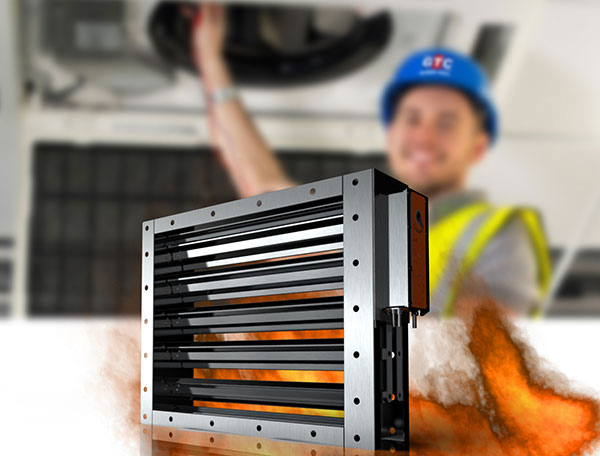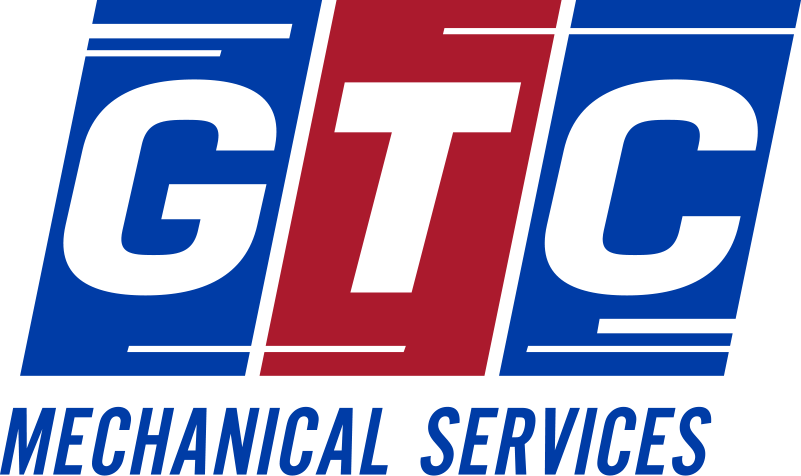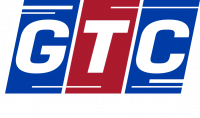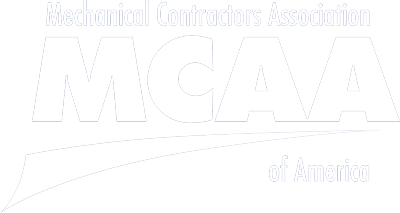Fire Damper Inspection & Repair
Have your building’s fire and smoke dampers been inspected to ensure that they meet the required federal NFPA guidelines?
Learn the guidelines!
NFPA 80: Fire damper inspection guidelines
19.4.1 — Each damper shall be tested and inspected one year after installation
19.4.1.1 — The test and inspection frequency shall then be every four years, except in hospitals, where the frequency shall be every six years.
NFPA 105: Smoke damper inspection guidelines
6.5.2 — Each damper shall be tested and inspected one year after installation. The test and inspection frequency shall then be every four years, except in hospitals, where the frequency shall be every six years.
Fire and smoke dampers are protective devices installed in HVAC systems to prevent the spread of fire and smoke inside duct work and through fire resistance-rated walls and floors. Fire life dampening systems are designed to save lives and reduce property damage.
Improperly working dampers can cause smoke or fire to spread through a building. Because dampers traditionally have a high failure rate — as much as 60 percent when not properly maintained — the National Fire Protection Association (NFPA) established federal inspection guidelines for all commercial structures.
Commercial buildings that are not in compliance with the NFPA’s established guidelines regarding the inspection and verification of properly installed, operating and maintained fire and smoke dampers, put people and property at risk.

Fire life dampening system inspections are mandatory!
In 2015, to comply with federal NFPA standards and enhance life saving measures, the city of Columbus, Ohio, established codes requiring that city fire officials routinely inspect fire and smoke dampers in commercial buildings throughout Franklin County. Dampers often are difficult to access, and facility managers or property owners may be unaware of their location. Failure to pass inspection can result in fines. Improperly working systems also affect airflow and temperature stability, dramatically increasing utility rates.
If a building’s fire life safety system is found to be faulty, repairs must be completed, re-inspected and approved within 60 days. Building owners or managers must show written proof that the building’s fire dampers have been inspected.
Make sure your fire and smoke dampers are in proper working order.
Schedule Your appointment with GTC Mechanical Services Today.
Trust only ICB-certified HVAC fire life safety technicians to keep your people and property safe!
Visual or external inspections are not thorough enough. That’s why the Sheet Metal Industry International Certification Board (ICB), a committee of the National Energy Management Institute Committee for the Sheet Metal and Air Conditioning Industry (NEMIC), established the fire life safety technician certification program.
ICB-certified HVAC fire life safety technicians are trained to inspect, test, maintain and repair fire and smoke dampers according to NFPA codes and standards. Testing is crucial to ensure dampers close completely. Broken or missing pieces can prevent the safeguards from performing properly.
GTC Mechanical Services is an ICB-certified contractor licensed by the state of Ohio.
GTC’s certified inspectors will:
- Utilize as-built drawings to locate dampers
- Take before and after pictures
- Ensure proper access to all smoke and fire dampers (create access points if required)
- Validate that the dampers are installed to manufacturer’s required specifications
- Lubricate all moving parts as necessary
- Verify all dampers are operating and have the ability to close all the way by:
- Checking the latch (if applicable)
- Replacing the fusible link (as needed)
- Clearing the fire/smoke damper area so that it is not obstructed
- Inspecting the fire/smoke damper operation to determine it is not inhibited by rust, bent tracks, damaged parts or hinges, misaligned blades or frames, screws or defective parts
- Document the inspection with the damper identification number, location of the damper, date of inspection, the cleanliness of the damper, photo of the damper and any issues that were detected
- Provide inspection documentation for review by the proper authorities
After the physical inspection, GTC will provide a quote for repair of all nonfunctional dampers. GTC technicians re-inspect after repair to ensure the fire life safety system meets NFPA 80 or NFPA 105 requirements.








